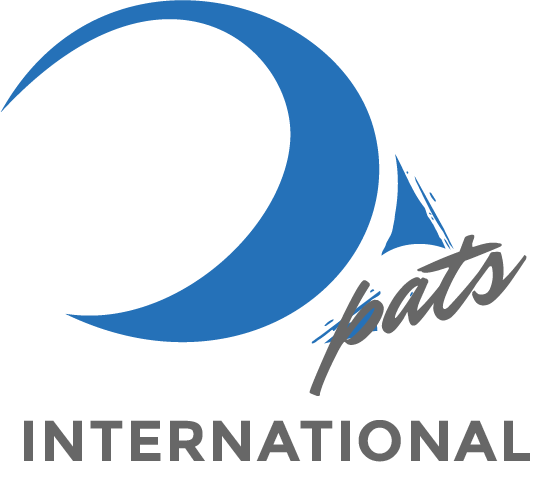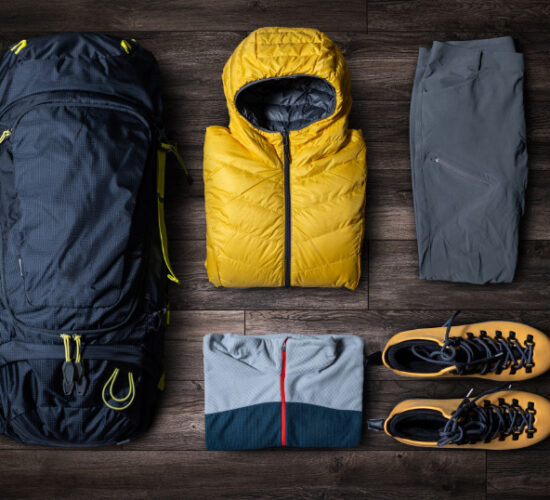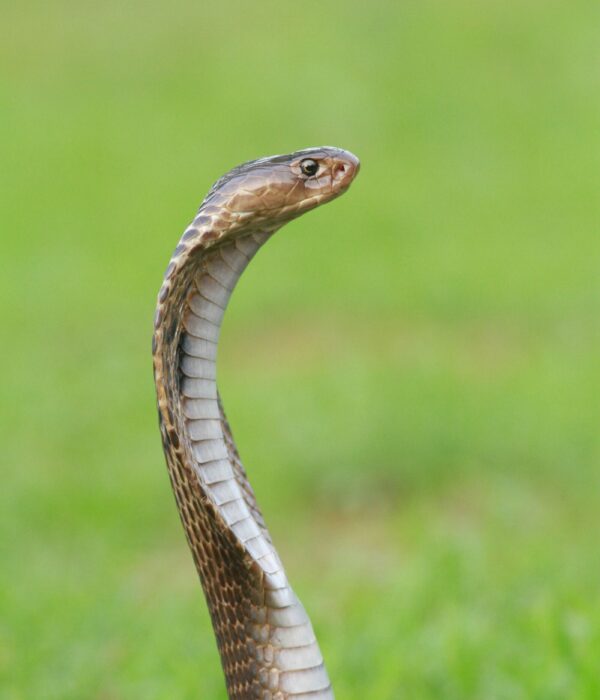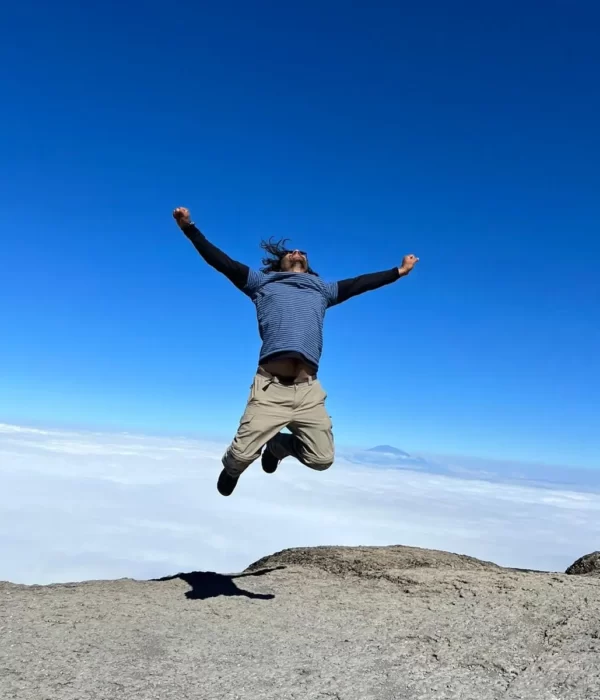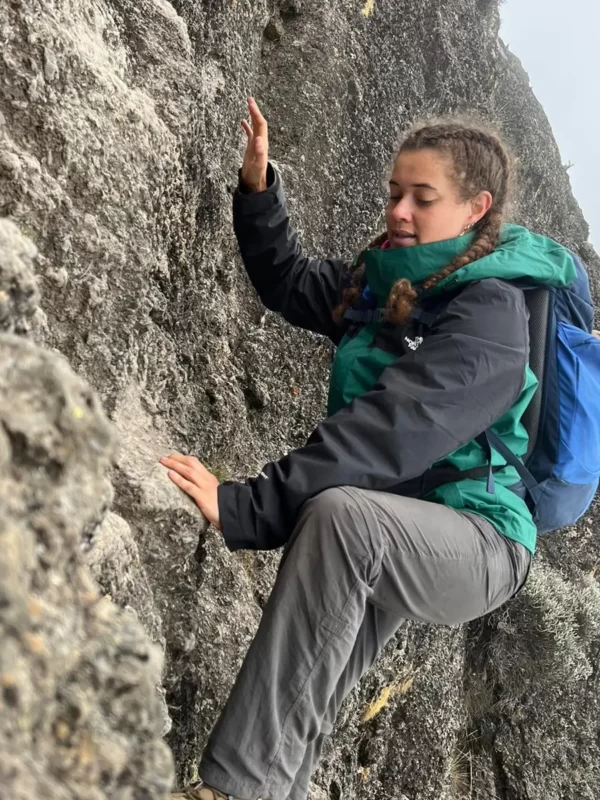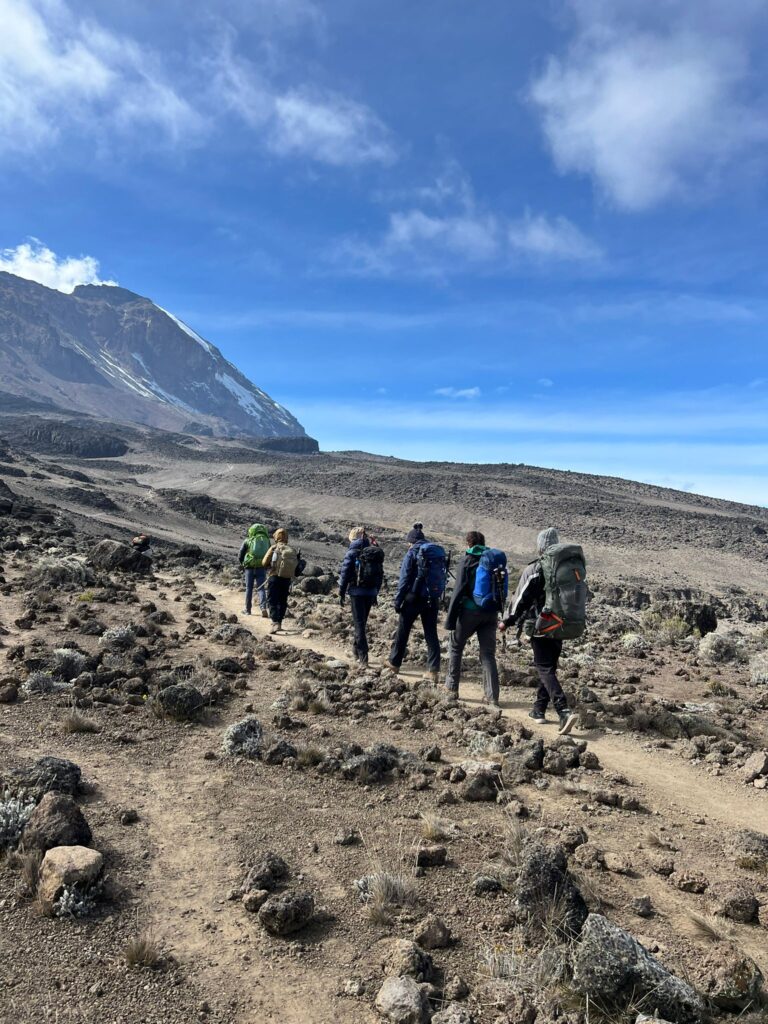Far from the best time to climb Mount Kilimanjaro, March, April, May, and November are the worst months to schedule a Kilimanjaro hike. During this time, the weather is typically rainy, windy, stormy, and snowy. If you’re on a tight schedule and can only hike during these months, the Marangu or Rongai routes are generally suitable for these difficult conditions. Rongai is located near the Kenyan border, on the northern slopes of Kilimanjaro, which receives less precipitation during the rainy season, whereas Marangu features cabin accommodations to shelter you from rainy or stormy nights. (1)
Table Of Contents
When Is The Best Time To Climb Kilimanjaro?
- Climbing Kilimanjaro In January
- Climbing Kilimanjaro In February
- Climbing Kilimanjaro In March
- Climbing Kilimanjaro In April
- Climbing Kilimanjaro In May
- Climbing Kilimanjaro In June
- Climbing Kilimanjaro In July
- Climbing Kilimanjaro In August
- Climbing Kilimanjaro In September
- Climbing Kilimanjaro In October
- Climbing Kilimanjaro In November
- Climbing Kilimanjaro In December
Full moon summits are a scam and some of the worst dates to plan a Kilimanjaro trip, if you want to avoid traffic. Many hikers approach these dates believing that a full moonlight provides a far better summit experience, but you’ll often find yourself losing momentum because these times are often congested. Many tour operators oddly insist hikers include a headlamp, in their gear list, despite assuring a full moonlight will be enough to illuminate the trail. If you still insist on climbing during a full moon, plan your trip at the beginning of June, the end of October, the beginning of December, or the tail end of February. Months close to the wet season are usually less popular. (2)
On a side note, if this is your first time trekking at high altitudes (above 3,000m/10,000ft), it’s best you compare the Lemosho vs Machane routes because they’ll leave you plenty of room for your body to adjust to higher elevations and are very easy underfoot. The routes have great acclimatization landscapes, low climbing difficulty and success rates ranging from 85-92%. However unlike the Marangu route on Kilimanjaro, both these trails are camping routes where you sleep in tents instead of hut accommodations. This can be a deal breaker, when climbing during the rainy season. More importantly, the Western Breach route on Kilimanjaro, which connects to both routes, should be avoided due to safety concerns. In light of bad weather conditions, rockfalls release at random, which have reportedly killed unsuspecting hikers in the past. This phenomenon is what sets the mountain apart other popular peaks, especially when you compare Kilimanjaro vs Everest Base Camp. Hikers considering the Western Breach trail to the summit will require technical climbing skills plus extensive knowledge of how to prepare for Kilimanjaro. It would be be wise to also assess Kilimanjaro climbing reviews before committing to a particular route. Furthermore, you cannot climb Kilimanjaro without a guide so, if you’re looking for the cheapest way to climb Kilimanjaro, it’s best you opt for a route with a short Kilimanjaro hiking distance to save costs.
When Should You Climb Kilimanjaro?
- Season 1 —- June to October is the long dry season on Mount Kilimanjaro, Tanzania. You’ll find mild temperatures, clear skies, and excellent photographic opportunities. Hiking is popular throughout these months, especially in August and September. (3)
- Season 2 —- December to February is less popular than the long dry season on Mount Kilimanjaro, yet it is equally warm. When planning your hike during these months, keep a white cloud cover and calm winds in mind.
This article will break down Kilimanjaro climbing seasons, off-peak alternatives, times to avoid a Kilimanjaro expedition entirely, in addition to other Tanzanian destinations.
Short Dry Season
1. Climbing Kilimanjaro In January
January is the first hottest month of the year, and as a result, it is very popular among hikers. This is because, in areas where subzero overnight temperatures are compounded by wind, the month is rather dry and cool. (4) This reduces humidity on Kilimanjaro’s lower slopes and enhances the chance of a ice cap crown on top of the mountain. Of course the glaciers on Kilimanjaro have been receding at alarming rates, due to climate change, so the ice found on the roof of Africa doesn’t closely resemble pictures found on various Tanzanian directories.
Mornings should be clear and sunny, with a cloud cover forming in the afternoons. Especially during the first two weeks of January, when mild rains can last into the month.
2. Climbing Kilimanjaro In February
February is one of the best months to hike Mount Kilimanjaro, If you’d like to avoid crowds on popular hiking trails. Though temperatures can drop to dangerously low levels at higher elevations, expect desirable temperatures and less clouds throughout the month. This will undoubtedly result in dry camping sites, which may fill your lungs with dust if you don’t wear a buff. (5)
3. Climbing Kilimanjaro In March
The beginning of March is still a good time to climb Kilimanjaro, eventhough the long rainy season begins at the end of the month. Since March starts off the long rainy season of the year, expect temperatures to plunge below freezing at higher elevations. The trails on Kilimanjaro are frequently wet, muddy, and snowy throughout the expedition, making for a less pleasurable hiking experience. Furthermore, you will likely lose out on wonderful photographic opportunities, but if you choose to hike during this time of year, you will undoubtedly enjoy quiet and tranquility because there aren’t many hikers booking their trips during this time.
Long Wet Season
4. Climbing Kilimanjaro In April
April is the worst month for a Kilimanjaro climb because of the likelihood of rain, thunder, and lightning, as well as harsh temperatures and winds at higher altitudes. (6) This month should be avoided at all costs; however, if time is of the essence, hike along the Rongai route. The hiking trail is located on the northern slopes of Kilimanjaro, near the Kenyan border, and is drier than other routes on the mountain. This is because the northern slopes of Kilimanjaro draws less precipitation during rainy seasons and reduces your chances of getting wet. Otherwise, you risk contracting pneumonia, flu or other dangerous infections when opting for alternatives routes. A great advantage of hiking the Rongai route is the likelihood of spotting large mammals such as antelopes, buffaloes and elephants. It’s also a great trail to trek in total solitude.
5. Climbing Kilimanjaro In May
May is not a good time to schedule a Kilimanjaro hike. Although May has less rainfall than April, the month should be avoided since the ground may be waterlogged and forest trails may still be dangerous. If you’re on a tight schedule, choose the Rongai route for a better and safer trekking experience. The route follows the northern slopes of Kilimanjaro, which receives less rain during the wet season. Aside from the elephants, antelopes and buffaloes you’re likely to encounter on the trail, Rongai also offers solitude, tropical rainforests and a jungle on the lower climate zones (cultivation, tropical rainforest, heath and moorland) of Kilimanjaro.
Dry Season
6. Climbing Kilimanjaro In June
June marks the end of the wet season and the start of the year’s long dry season. This is one of the best months to avoid summer crowds while still enjoying pleasant weather. The rainy season frequently extends into the summertime, so plan your trip at the end of the month because post-rain conditions on Kilimanjaro can be treacherous and waterlogged underfoot. However, while the mountain temperatures are pleasant in the afternoons, expect extreme cold and even high winds at night in the alpine zone and arctic zone.
7. Climbing Kilimanjaro In July
July is a great time to climb Mount Kilimanjaro. The month coincides with the start of many people’s vacations and holidays in North America and Europe, so expect more people to climb Kilimanjaro during the July for a variety of reasons. For example, schools are closed at this time, and families climb as part of their vacation plans. The disadvantage of trekking during this month is that the trails can become rather crowded, yet some individuals enjoy the chance to interact with other groups at camping sites. Despite the fact that the weather is typically mild at this time of year, expect subzero nighttime temperatures and cold winds. (7)
8. Climbing Kilimanjaro In August
August is one of the driest and hottest months of the year, but is also bitterly cold at night in the alpine zone and arctic zone. Otherwise, expect beautiful weather and a clear, sunny sky throughout various climate zones. Because summer vacations are in full swing, it is also one of the busiest months of the year so, If you’d like to avoid crowds, opt for the Lemosho or Rongai routes because they’re less congested than the popular Machame and Marangu trails. August can also be dry and dusty at campsites and on the trails, so if the wind picks up, you’ll need to use a light buff to keep dust off your face.
9. Climbing Kilimanjaro In September
September is best month to climb Kilimanjaro during the summer and is a popular period among many hikers. Though extreme cold and even high winds are common in the alpine zone and arctic zone, you can expect superb weather, dryer conditions, and spectacular mountain views throughout various climate zones (cultivation, tropical rainforest, heath and moorland, alpine desert and arctic).
10. Climbing Kilimanjaro In October
Just like June, October is a very good month to climb with relatively dry and mild weather and is often less popular than August or September. The short showers may start to kick in towards the end of the month, but after four months of dry weather, this shouldn’t be the biggest issue on the mountain. However expect gloomy skies throughout the afternoons and gusty winds toward the evenings. This makes the early stages of October considerably more enjoyable due to the consistent weather conditions that come in from September.
Short Wet Season
11. Climbing Kilimanjaro In November
November is the year’s short rainy season, so expect less stable weather patterns and overcast skies. Although hiking routes are significantly less popular during the month, there is a good chance of short rains and poor mountain visibility. (8) Trekking in November is considerably more manageable than hiking in March, April, and May, but it is more windier and colder than usual. Conditions can be exceedingly wet, muddy, and difficult, as they are with every rainy season. Furthermore, expect ground temperatures to fall below freezing levels when at higher altitudes.
Short Dry Season
12. Climbing Kilimanjaro In December
The short rainy season frequently extends into December, yet due to the upcoming festive holidays, this is still a popular time to hike Mount Kilimanjaro. Early in the month, lower altitudes might be slippery and, as you approach the peak, you’ll encounter strong winds and subzero temperatures. As a result, if you’re planning a hike within the period, arrange it for the second half of the month for a far more delightful hiking experience.
